John Ericsson Memorial
Introduction
Text-to-speech Audio
Images
John Ericsson Memorial in Washington, D.C.'s West Potomac Park
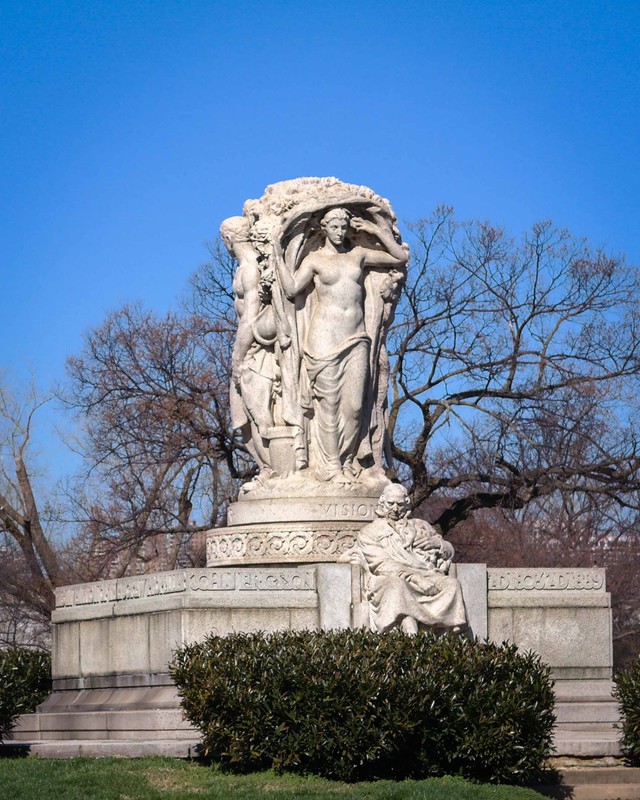
A closer look at Frazier's portrayal of Ericsson
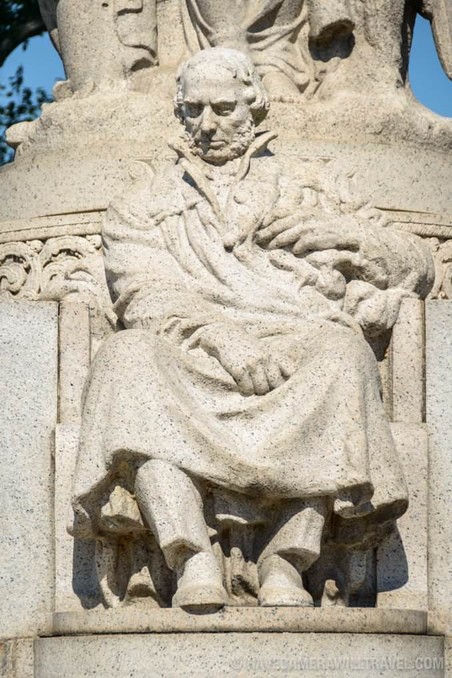
One of the three allegorical figures of the memorial
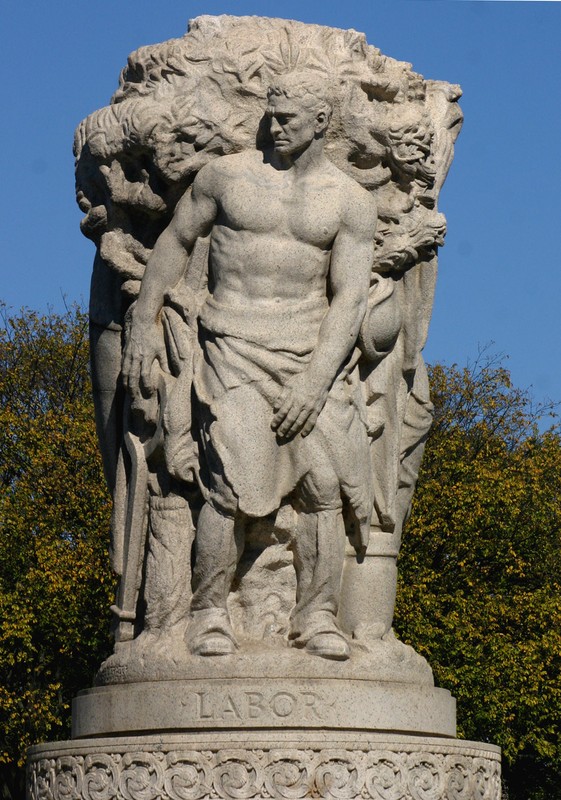
John Ericsson (1803-1889)
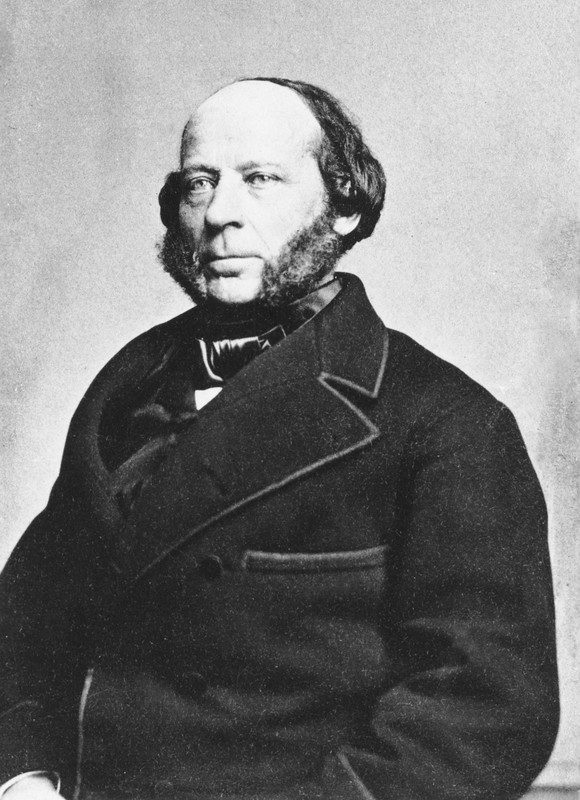
A photograph of the Monitor's crew on deck
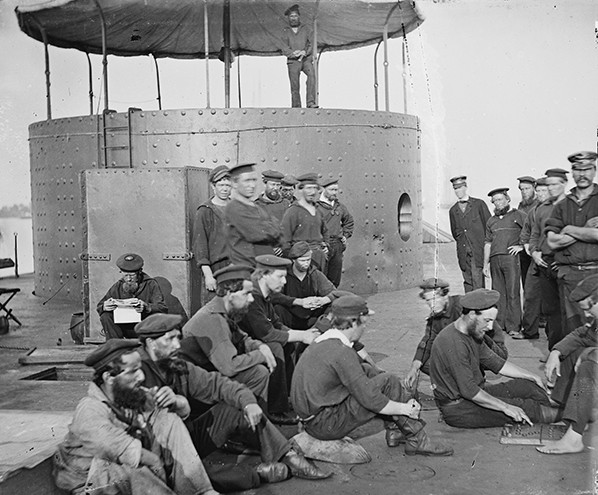
Backstory and Context
Text-to-speech Audio
John Ericsson was born in Sweden on July 31, 1803. As a teenager, he joined the Swedish army and served as a lieutenant of topographical engineers. In 1826, Ericsson immigrated to England, settling in London. While residing in the city, he designed plans for installing naval engines below the waterline to protect them from enemy gunfire, and in 1836 received a patent for a screw propeller.
Ericsson’s work caught the attention of a Captain Robert F. Stockton, a captain in the U.S. Navy who was in England at the time. Stockton convinced the U.S. Navy to order a small iron steamer outfitted with Ericsson’s screw propeller and an engine below the waterline. The vessel, named the Robert F. Stockton, arrived on America’s shores in May 1839. Ericsson immigrated to the United States a few months later and settled in New York City, where he would live for the remainder of his life. Soon after, Ericsson designed the machinery for the USS Princeton, the U.S. Navy’s first steam-powered screw warship. Launched in 1843, the vessel became infamous the following year when one of its guns exploded during a pleasure cruise on the Potomac River attended by President John Tyler and many federal government officials. The blast killed U.S. Secretary of State Abel Upshur and U.S. Secretary of the Navy Thomas Walker Gilmer, and injured Stockton and others. Fortunately, Tyler was unharmed. Shaken by the disaster, Ericsson, who designed the gun, decided not to work for the U.S. Navy again, and shifted his focus to designing commercial ships.
Ericsson’s feelings changed, however, during the Civil War. Following the outbreak of the conflict, the U.S. Navy abandoned Norfolk, Virginia. In the process, it scuttled the USS Merrimack, a steam frigate. Shortly after, the Confederacy raised the vessel and secretly rebuilt it as an ironclad. Commissioned the CSS Virginia in February 1862, it looked to break the federal blockade. When the U.S. Navy learned of the Confederacy’s clandestine plans, it moved to create ironclads of its own. Ericsson submitted a design and the U.S. Navy accepted it. Dubbed the USS Monitor and launched on January 30, 1862, the steam-powered ironclad vessel featured a low, long hull, screw propeller, and single revolving turret. Just over a month later, on March 9, the Monitor battled the Virginia to a draw at Hampton Roads. In December of that same year, Ericsson’s revolutionary ship sunk in stormy seas off Cape Hatteras, North Carolina. Despite the fate of the Monitor, the U.S. Navy ordered Ericsson to build new classes of Monitor-like ironclads.
After the war, Ericsson continued to design new naval technology. He worked on torpedoes ships and solar-powered engines. Ericsson died in New York City on March 8, 1889 at the age of eighty-five. The next year, the Swedish government requested the return of his remains, which were reinterred in Filipstad.
Following Ericsson’s death, Scandinavian-Americans petitioned Congress to erect a memorial in honor of him in Washington, D.C. In 1916, Congress appropriated $35,000 and established a commission to oversee the project. The John Ericsson Memorial Committee then raised an additional $25,000, and in cooperation with the Commission of Fine Arts chose sculptor James Earle Frasier to design the memorial. After the commission selected a site in West Potomac Park, Frasier arranged for a large piece of pink granite to be shipped there in the winter of 1925-1926. The artist planned to carve the memorial on site during the spring. Frasier, however, was working with a tight deadline. The memorial’s unveiling was set to coincide with a May visit to the United States from Sweden’s Crown Prince Gustavus Adolphus and his wife. True to the prediction of many in the nation’s capital, Frasier did not finish the project in time. For the dedication on May 29, he tinted his full-size plaster model pink to make it appear as if it was the real memorial, which Frasier did not complete until the following spring. The memorial depicts Ericsson seated in a chair with a cloak draped around him. With his head tilted down and slightly to the side, he appears deep in thought. An ode to the engineer and inventor’s Scandinavian roots, Frasier included in the composition the Yggdrasill, the tree of life in Norse mythology, which rises behind Ericsson. Standing around the tree are three allegorical figures that represent “Adventure,” Labor,” and “Vision.”
Sources
Jacob, Kathryn Allamong. Testament to Union: Civil War Monuments in Washington, D.C. Baltimore: The Johns Hopkins University Press, 1998.
"John Ericsson." Encyclopædia Britannica. Web. 14 May 2021 <https://www.britannica.com/biography/John-Ericsson>.
Tucker, Spencer C., ed. American Civil War: The Definitive Encyclopedia and Document Collection. Vol. 2, D-H. Santa Barbara, CA: ABC-CLIO, 2013.
Wright, John D. The Routledge Encyclopedia of Civil War Era Biographies. New York: Routledge, 2013.
https://commons.wikimedia.org/wiki/File:John_Ericsson_National_Memorial.jpg
https://dcphotoguide.com/john-ericsson-national-memorial/
https://commons.wikimedia.org/wiki/File:John_Ericsson_Memorial_detail.jpg
https://www.britannica.com/biography/John-Ericsson
https://monitor.noaa.gov/shipwrecks/uss_monitor.html
